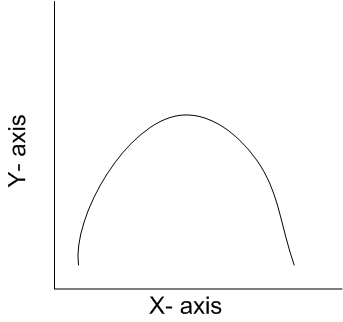 Multiple Choice Questions
Multiple Choice QuestionsWhen a neurone is a resting state, ie, not conducting any impulse, the axonal membrane is
equally permeable to both Na+ and K+ ions
impermeable to both Na+ and K+ ions
comparatively more permeable to K+ ions and nearly impermeable to Na+ ions
comparatively more permeable to K+ ions and nearly impermeable to Na+ ions
C.
comparatively more permeable to K+ ions and nearly impermeable to Na+ ions
Neurones are excitable cells because their membrane is in a polarised state. Different types of selectively permeable channels are present on the neural membrane. When a neurone is not conduction any impulse, i.e. resting, the axonal membrane is comparatively more permeable to potassium ion (K+) and nearly impermeable to sodium ion (Na+)
The cork cambium, cork and secondary cortex are collectively called
Phellogen
Periderm
phellem
phellem
The curve given below shows enzymatic activity with relation to three conditions (pH, temperature and substrate concentration)
What do the two axises (X and Y) represent?
|
X –axis |
Y-axis |
|
Temperature |
Enzyme activity |
|
X –axis |
Y-axis |
|
Substrate concentration |
enzymatic activity |
|
X –axis |
Y-axis |
|
enzymatic activity |
temperature |
|
X –axis |
Y-axis |
|
enzymatic activity |
temperature |
Uricotelic mode of passing out nitrogenous wastes is found in
birds and annelids
amphibians and reptiles
insects and amphibians
insects and amphibians
|
Gland |
Secretion |
Effect on Body |
|
A |
Oestrogen |
Maintenance of secondary sexual characters |
|
Alpha cells of islets of Langerhans |
B |
Raise blood sugar level |
|
Anterior pi- tuitary |
C |
Over secretion leads to gigantism |
|
A |
B |
C |
|
Placenta |
Insulin |
Vasopressin |
|
A |
B |
C |
|
Ovary |
Insulin | Calcitonin |
|
A |
B |
C |
|
Placenta |
Glucagon |
Calcitonin |
|
A |
B |
C |
|
Placenta |
Glucagon |
Calcitonin |
One very special feature in the earthworm pheretima is that
the typhlosole greatly increases the effective absorption area of the digested food in the intestine
the S- shaped setae embedded in the integument are the defensive weapons used against the enemies
It has a long dorsal tubular heart
It has a long dorsal tubular heart
Which one of the following is wrongly matched?
Puccinia - Smut
Root - Exarch protoxylem
Cassia - Imbricate aestivation
Cassia - Imbricate aestivation
Which one of the following statements is correct with respect to kidney function regulation?
Exposure to cold temperature stimulates ADH release
An increase in glomerular blood flow stimulates formation of angiotensin II
During summer when body loses lot of water by evaporation, the release of ADH is suppressed
During summer when body loses lot of water by evaporation, the release of ADH is suppressed
A prokaryoticv autotrophic nitrogen-fixing symbiont is found in
Cycas
Cicer
Pisum
Pisum
